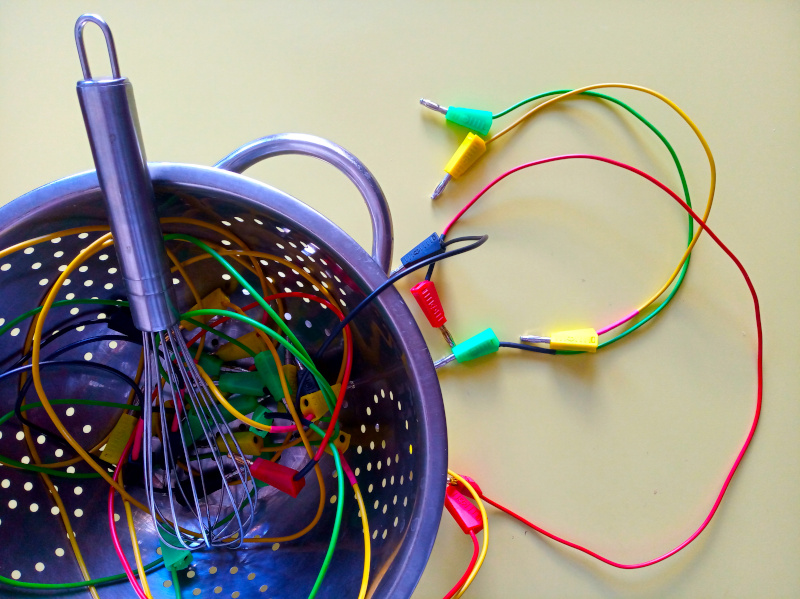In this recipe we’ll modulate the frequency of a clock. We’ll start by connecting the unipolar output of VARIOUS SHAPES to the audio input of the 2nd channel of VCA DUAL. The output of the 2nd channel of VCA DUAL connects to the frequency input of RANDOM. The phasor output of RANDOM connects to the 1st CV input of ENVELOPES. The way we’re modulating the frequency of RANDOM with VARIOUS SHAPES, but instead of doing real FM, we’re only adding a modulating positive offset to the carrier frequency. The three position slide switch of RANDOM is at the bottom position (40 Hz) so we can get a finer control of the knob since we want it to run at a low frequency. The phasor output of RANDOM now has a modulating frequency starting at the position of RANDOM’s top knob and going up and then coming down, controlled by VARIOUS SHAPES. This way we can trigger the envelope of the 1st channel of ENVELOPES at a constantly changing tempo.
Connect the EOS output of the 1st channel of ENVELOPES to the CV input of the 3rd channel of ENVELOPES, so we can trigger the 3rd envelope at the stage we set the EOS of the first channel (in this case it’s the Hold stage). The first envelope output connects to the CV input of the first channel of VCA MIXER, and the audio (bipolar) output of TRAPEZOID to the audio input of the same channel of VCA MIXER. The third envelope connects to the SLOPE UP input of TRAPEZOID, controlling the rising slope of the oscillator. The MIX output of VCA MIXER connects to the audio input of MULTIFILTER.
The unipolar output of PWM SINE connects to the audio input of the 1st channel of VCA DUAL, and the output of that channel of VCA DUAL connects to the frequency input of MULTIFILTER. This way we can control the amplitude of the CV modulating the cut-off frequency of the filter, and use the filter’s knob to give an offset to the CV. Bring the 1st VCA DUAL channel knob to the center, and the frequency knob of MULTIFILTER rather low, so we can get these distinct dives of the frequency. The LP (for lowpass) output of MULTIFILTER connects to one of the signal inputs of MAIN, so we can send this signal to the PA.
Play with the knobs of both VCA DUAL channels to change the modulation range of the RANDOM and MULTIFILTER frequencies, as well as with the frequency knob of the MULTIFILTER and VARIOUS SHAPES, to change the depth of the frequency dive of the filter and the acceleration of the clock respectively.


152 thoughts on “Synth recipe 1, modulating clocks”
Comments are closed.